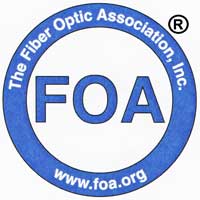

September
2020
|
Search the FOA website
FOA
Home Page Contact
Us
|
Sign
up for the FOA eMail Newsletter
Privacy
Policy
Sections
News
Technical Worth
Reading Q&A
Training/FiberU
Resoures
Safety
About
|
- In
This Issue
- Note
we have changed the format to place articles in
sections on one topic and all articles are dated so
you know if we repeat one - whcih we often do when
we think it's very important!
3
New Fiber U MiniCourses.
5 New FOA YouTube Videos.
Installing FTTH in Beirut.
Another Mystery Connector.
The 5G Lie
More
Newsletter
Sections
Click
on any link to jump to that section
News
5G lie, AT&T Plans, Tight Cable Fit, Broadband Study,
New Products
Technical
Total internal reflection , the mystery of
loss in dB solved, splices on OPGW, manufacturers of
prepolished connectors, more
Worth
Reading Damage Protection, Passive
Optical LANs, more
Q&A
As usual, new questions
Training/FiberU
New school, making training classroom safe, onine
training, materials, more
Resoures
Safety
About
FOA Certifications:
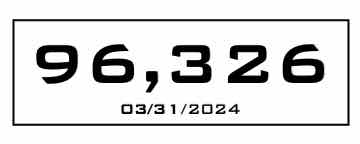
Time
To Renew Your FOA Certifications?
Special
offer - 1/3 Off Renewal
Jobs
- See
FOA Jobs
Web Page and FOA on

- The
FOA Jobs
Web Page has been updated and a new page added on Using
your FOA Training/Certification to Find the Right Job
in Fiber Optics
Where
Are The Jobs In Fiber Optics? FOA talks about all the
applications for fiber optics, what jobs involve and the
qualifications for the workers in the field in this YouTube
video.
Join
The FOA eMail Newsletter List
Want to
be notified when the FOA Newsletter is updated? Sign
up for the FOA eMail Newsletter. You can also
sign up from your cell phone: text "FOA" to 22828 (usual
text message charges apply)
Trademarks:
The FOA CFOT® (Certified Fiber Optic Technician) and
Fiber U® (the FOA online self-study program) are registered
trademarks of the FOA.

Want
to know more about fiber optics? Study
for FOA certifications? Free
Self-Study Programs are on "Fiber
U®." Looking for specific information? Here's the
largest technical reference on the web: The
FOA Online Fiber Optic Reference Guide.
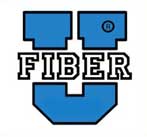
Free
online self-study programs on many fiber optics and cabling
topics are available at Fiber
U, FOA's online web-based training website.
FOA
Reference Books
Available Printed or eBooks
The
fiber book is available in Spanish and French
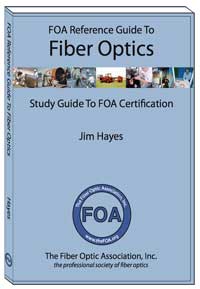
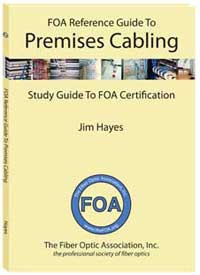
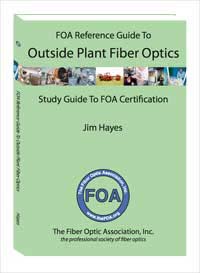
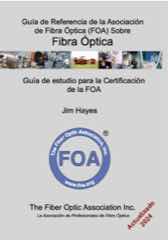
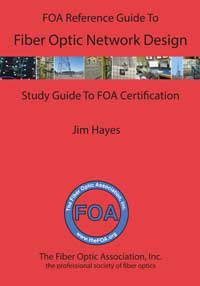
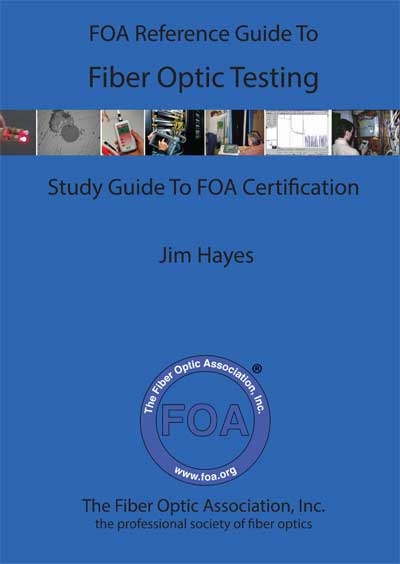
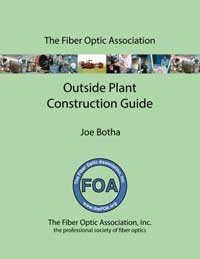
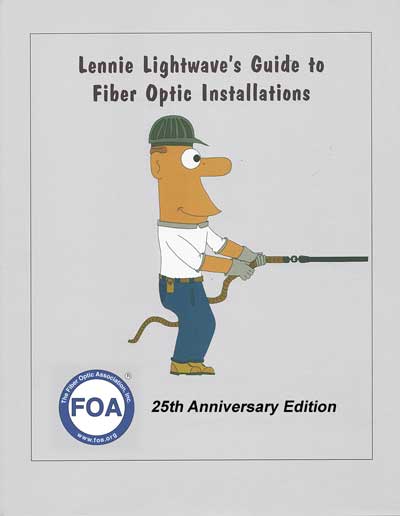
Lennie
and Uncle
Ted's Guides are now also available as free iBooks on
iTunes.
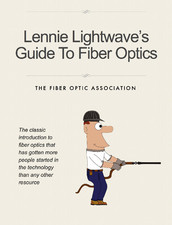
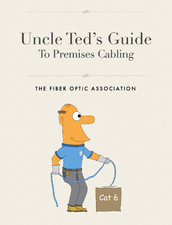
Click
on any of the books to learn more.
- Fiber
Optic Safety Poster to download and print
FOA
Videos on 
FOA
is a member of:




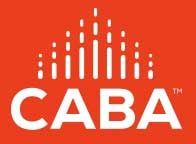
The
FOA Newsletter is edited by Jim Hayes - send your stories,
leads, ideas, comments to <jim @ foa.org>

Search
the FOA Website With DuckDuckGo
- The
Archives: Past Issues.
- Use
these links to read past issues or use FOA's
Custom Search to look for specific topics on our
website.
1/20,
2/20, 3/20.
4/20, 5/20,
6/20, 7/20,
8/20, 9/20
1/19,
2/19, 3/19,
4/19,
5/19, 6/19,
7/19, 8/19,
9/19, 10/19,
11/19,
12/19
1/18,
2/18, 3/18,
4/18, 5/18, 6/18,
7/18, 8/18,
9/18, 10/18,
12/18.
1/17,
2/17, 3/17,
4/17, 5/17,
6/17, 7/17,
8/17, 9/17,
10/17, 11/17,
12/17
1/16,
2/16, 3/16,
4/16,
5/16, 6/16,
7-8/16, 9/16,
10/16, 11/16,
12/16
1/15,
2/15, 3/15,
4/15, 5/15,
6/15, 7/15,
8/15, 9/15
, 10/15,
11/15 , 12/15
1/14,
2/14, 3/14,
4/14, 5/14,
6/14, 7/14,
8/14, 9/14,
10/14, 11/14,
12/14
1/13,
2/13, 3/13,
4/13, 5/13,
6/13, 7/13,
8/13, 9/13,
10/13, 11/13,
12/13
1/12
, 2/12, 3/12,
4/12, 6/12,
7/12, 8/12,
9/12, 10/12,
11/12, 12/12
1/11
, 2/11,
3/11,
4/11,
6/11, 7/11,
8/11, 9/11,
10/11, 11/11,
12/11,
1/10
, 2/10,
3/10, 4/10,
05/10,
07/10,
08/10, 09/10,
10/10,
11/10
1/09
, 2/09,
3/09, 04/09,
05/09,
07/09,
08/09, 09/09,
10/09, 11/09,
12/09
1/08
, 2/08, 3/08,
4/08, 5/08,
6/08, 7/08,
8/08, 09/08, 10/08,
11/08, 12/08
12/07 , 11/07,
10/07, 09/07,
08/07, 07/07,
06/07, 05/07,
04/07, 03/07,
2/07, 1/07
12/06
, 11/06, 10/06,
09/06, 8/06,
7/06, 6/06,
5/06, 4/06,
3/06, 2/06,
1/06,
12/05
,11/05, 10/05,
09/05, 08/05,
07/05, 6/05,
5/05, 4/05,
2/05, 01/05,
12/04
, 10/04, 9/04,
8/04, 7/04,
6/04, 5/04,
4/04, 3/04,
1/04,
12/03
, 11/03 10/03
9/03, 8/03,
7/03, 6/03,
3/03, 10/02
, 8/02, 5/02
Current Issue of FOA Newsletter
Time
To Renew Your FOA Certifications?
To keep
your FOA certifications active, you need to renew them when
they expire. Now we have a new more convenient way to renew
- an online store at Paypal - where you can quickly and
conveniently use your PayPal account or your credit card to
renew your certifications.
- You
can now renew with PayPal or a credit card
-
PayPal
is available worldwide
Join
FOA On Social Media

FOA has
four LinkedIn Groups
FOA
- official page on LinkedIn
FOA
- covers FOA, technology and jobs in the fiber optic
marketplace
FOA
Fiber Optic Training - open to all, covers fiber optic
technology and training topics
Grupo
de La Asociación de Fibra Óptica FOA (Español)
SPECIAL
OFFER - Save 1/3 On Your Certification Renewal Cost
In the
near future, there will be a requirement for continuing
education to renew your FOA certifications. FOA is testing
an option for renewals where you take a short Fiber U online
course.
If you would like to help FOA test this option, you can save
1/3 the cost of your renewal. Go
here to take the Fiber U CFOT Renewal Course: |
FOA
Newsletter - Features
New
Fiber U MiniCourses
Got
An Hour? Learn Something New About Fiber Optics.
Online
learning has been growing even more popular during the
pandemic, and FOA's Fiber U free online courses have
certainly been popular. We've just introduced a new type of
short course, one you can finish in an hour or less, that
covers a specific topic. The topics were easy to pick; they
are ones we're asked about often.
The courses have two components, video lectures and
readings, that are complementary. As usual there is a
self-test to allow you to check your comprehension. As with
other Fiber U courses if you desire, you can take a short
test for a Fiber U Certificate of Completion that costs
only $10.
The three new courses now available are "Fiber Optic
Restoration,' Connector Identification" and "The
Mysterious dB of Fiber Optics."
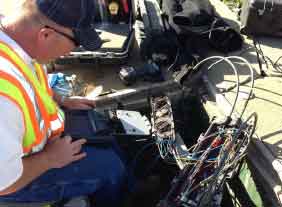
Fiber
Optic Network Restoration MiniCourse.
Every
fiber optic network is susceptible to outages, either by
damage to the cable plant or problems with the
communications equipment. This Fiber U MiniCourse covers
what kinds of damage occurs to a fiber optic
communications network, how to plan for outages and
restoration and how to troubleshoot and repair problems.
This course is aimed at managers and network owners as
well as contractors and installers.
If you are interested in restoration - aren't we all?
- you should also read this article in dpPro magazine
by FOA President Jim Hayes: Damage
Protection Requies Looking Overheas As Well As
Underground - dpPRO Magazine - about
the problems with aerial cables.
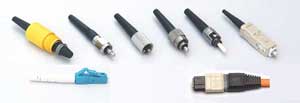
Fiber
Optic Connector Identification MiniCourse
Over
the history of fiber optics, there have been more than 100
unique designs for fiber optic connectors. Fortunately
only a few have become widely used, but field techs often
encounter connectors they are not familiar with and call
FOA for help. This Fiber U MiniCourse covers the most
popular connectors today and some that have been widely
used in the past that techs often contact FOA asking for
help in identifying them.
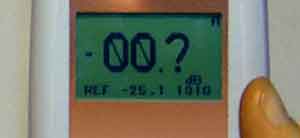
The
Mysterious dB of Fiber Optics MiniCourse
Fiber optic measurements of power
and loss are made in dB, a mysterious unit of
measurement that confuses many people. This
MiniCourse helps you understand what dB and dBm are,
how they are defined and measured. The course also
explains how small change in an international
standard created confusion and misunderstanding of
dB. Even if you aren't a math whiz, this FOA
MiniCourse can help you understand dB.
All these free courses and many more are
available at Fiber
U.
5
New FOA YouTube Lectures
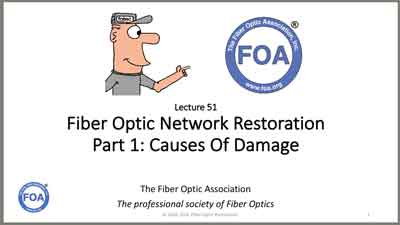
FOA
Has been adding new lectures to our YouTube
channel while we're developing new reference and
training materials. In the last month, we've added
5 new lectures in the FOA Lecture Series on Fiber
Optics:
FOA
Lecture 51 Fiber Optic Restoration
Part 1 - Causes of Damage To The
Network
FOA
Lecture 52 Fiber Optic Restoration Part 2 -
Planning For Restoration
FOA
Lecture 53 Fiber Optic Restoration Part 3 -
Troubleshooting And Repair
FOA
Lecture 54 Fiber Optic Connector Identification
- New and old
FOA
Lecture 55 The Mysterious dB of Fiber Optics.
- Understanding dB
Lectures 51, 52 and 53 are about fiber optic
network restoration, broken into 3 parts: what
causes damage, how to plan for restoration and
finally troubleshooting and repairing a network
outage. Lecture 54 is a short history of the
development of fiber optic connectors and a
overview of the ones most used today. Lecture 55
will teach you about dB, it's origin, an
explanation of the math behind it and why
standards can make it confusing. Like all
our YouTube lectures, they are short and easy to
understand.
Classroom
Training Offered By More FOA Schools
FOA has
been collaborating with our schools that are offering
classroom training with Covid precautions and have created
guidelines for offering in-classroom training for schools.
We're happy to share that information with anyone - email
us. More schools now offering classroom training with
Covid precautions. See Training,
below.
Installing
FTTH In Beirut - And Then...
FOA
has been corresponding with Omar Rawdah of T-Grid
in Lebanon who is involved with installing FTTH in
Beirut. He sent us a very interesting PPT presentation
regarding his work which we can share with our readers. It
shows how FTTH installs in a very old city like Beirut are
similar - but different - from other cities. Here
is the PPT on the T-Grid Beirut installation in PDF
format.
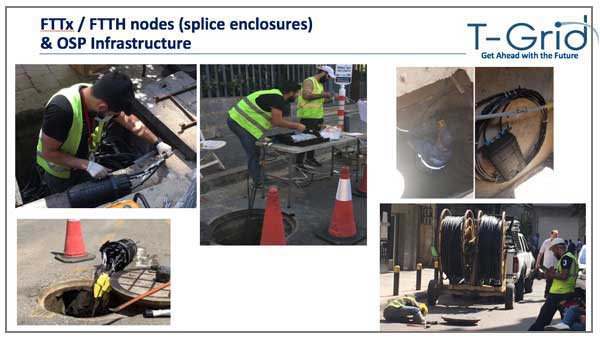
While
we were corresponding with Omar, Beirut suffered a massive
explosion on August 4th caused by materials stored in a
warehouse on the waterfront. He posted photos of some of the
damage on the Facebook
page Fibre Optics Lebanon including these
before and after shots of one telecom company building.
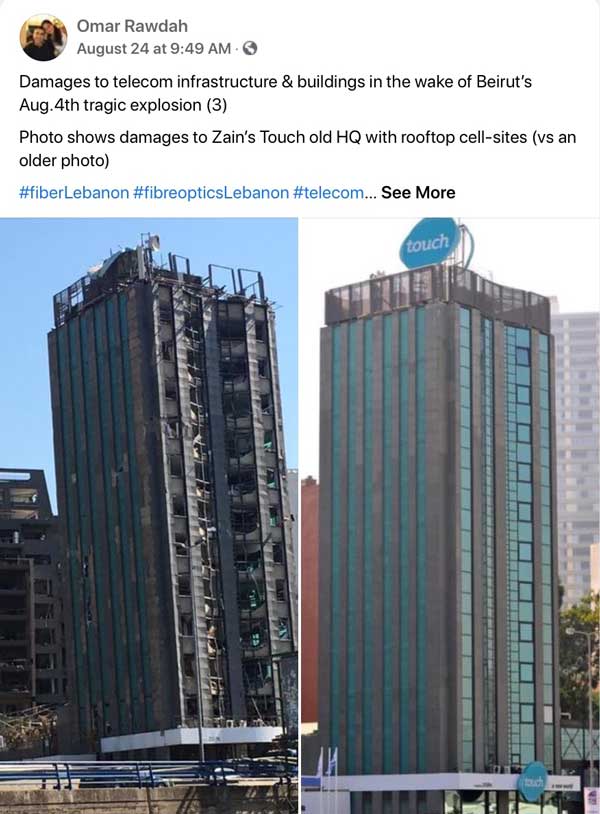
And
these damaged cabinets from the Beirut City CCTV
surveillance system.
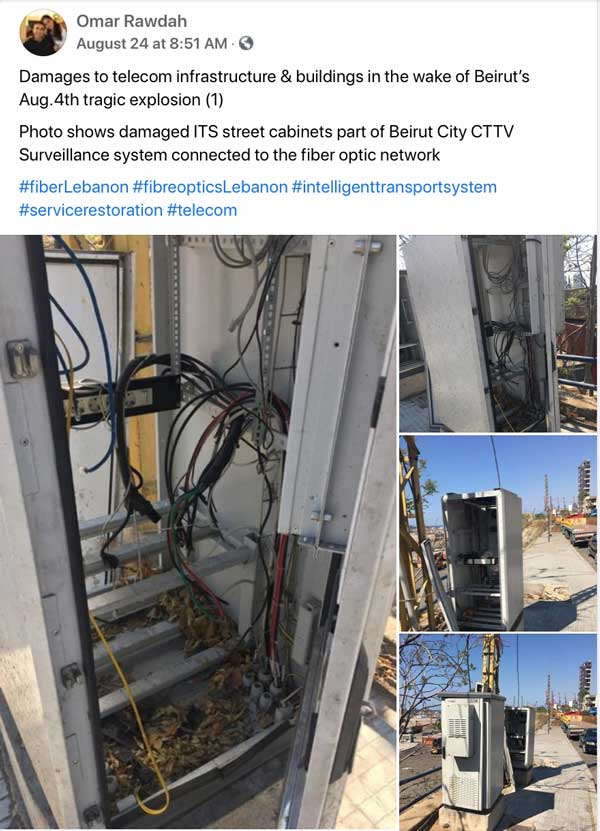
Privately
he shared this photo of his office, with all the glass from
the windows broken on the floor. Fortunately neither he nor
his family were harmed.
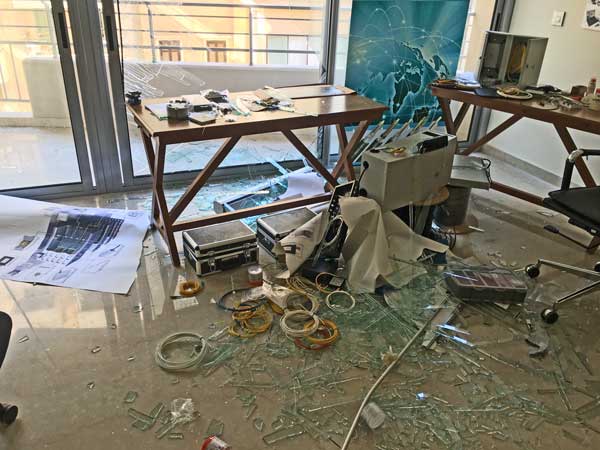
You can find many more photos online of the damage in
Beirut. These show graphically how much rebuilding is needed
to a large section of the city that was essentially
destroyed.
Another
Mystery Connector
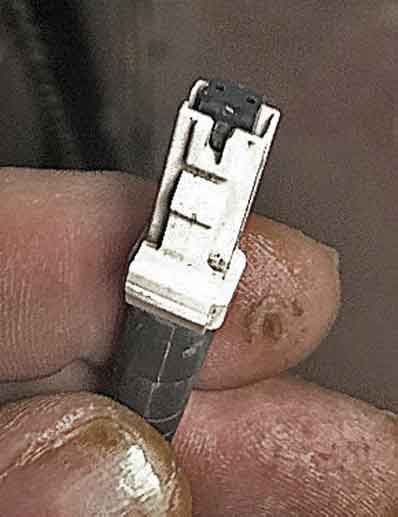
A
reader sent us this photo of a connector they found in the
field, connected to a Cisco Catalyst Router.
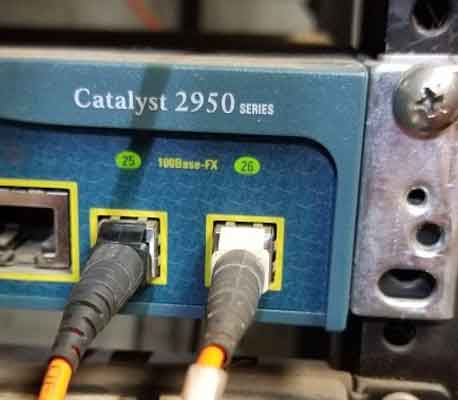
It's
a MT-RJ, circa 2005, still in use. The MT-RJ was a
highly-touted "small form factor" connector introduced
around 2000 for higher density applications, but it had
problems and faded from the marketplace fairly quickly.
1995-2020
- FOA's 25th Anniversary!
As part
of celebrating 25 years of serving the fiber optic industry
as its primary source of technical information and
independent certifying body, FOA thought it appropriate to
create a short history of the organization and how it has
developed to help the fiber optic industry. We also
wanted to recognize the contributions many people have made
to the organization over the years that made FOA what it is
today.
The FOA history is now archived on the FOA website where
you can read it anytime or link to it.
Updated
info - dB, total internal reflection and science projects,
In
Case You Missed The Last FOA Newsletter
You can
still read these feature articles in the last issue:
FOA
Turns 25.
Projects For Teachers, Kids
and Parents.
Winter
Installations.
Mystery
Connectors.
The Cost of
Connectivity.
Replacing A
Utility Pole.
FOA
Newsletter Sections
News
Technical Worth
Reading Q&A
Training/FiberU
Resoures
Safety
About
|
News
|
Headline
That Got Our Attention:
"The
Washington Post speed tested 5G phones against 4G ones.
America’s new nationwide 5G networks weren’t much faster —
and in some places they were slower."
The Post reporter Geoffrey A. Fowler carried 6 phones, a
year old 4G/LTE phone and 5G phones from the major carriers
around the San Francisco Bay Area and ran speedtests on each
phone, over 4000 tests in total. He found 5G speeds were
roughly the same as 4G/LTE and some places slower. AT&T
speeds were about the same, as was T-Mobile speeds, but
Verizon coverage was not available in the Bay Area where he
tested the phones.
"AT&T
and T-Mobile both market their 5G networks as
“nationwide,” though they carefully dance around speed
claims. AT&T says 5G means “improved speed” and
T-Mobile says “faster speed,” without many specifics.
Verizon does make extreme-speed claims about its 5G
network — it’s “25x faster than today’s 4G” — but it is,
as of this summer, available in less than 1 percent of the
country."
Fowler went on to say "When I asked executives at the
networks about speed, they acknowledged a truth their
advertisements carefully omit. “Our 5G experience initially
is as good or better than our 4G LTE experience,” said Chris
Sambar, AT&T’s executive vice president for technology
operations. Let that sink in: At least for now, 5G is … only
as good as 4G.
T-Mobile is equally circumspect, highlighting the range of
its coverage, not its jaw-dropping speed. “We’re not
claiming that this is where the story of 5G ends. It’s very
much a beginning,” said Mark McDiarmid, the senior vice
president for radio network engineering and development. He
said right now T-Mobile’s 5G network is “two times as fast”
as its 4G LTE nationwide average."
"When PC Magazine challenged AT&T about shortcomings of
its low-band 5G network in January, the company downplayed
speed. “We’ve been pretty vocal that early on there’s no
tremendous difference,” AT&T vice president Gordon
Mansfield said at that time."
"Verizon, the largest U.S. wireless carrier, has announced
it also will launch a low-band 5G network by the end of the
year. And at least to investors, Verizon’s CEO also has been
blunt about the incremental improvements nationwide 5G will
offer over 4G. “In the beginning, it’s going to be small,”
Hans Vestberg told a JPMorgan conference in May."
"I
told AT&T about both of our cases. It sent me a
different phone to test, but the result was the same. “You
are two data points,” said AT&T’s Sambar. “We’ve done a
lot of internal testing ... [and] we’re seeing our that our
5G network is showing speeds that are at least at parity
with LTE, if not better.”
"But for everyone else, waiting will bring down the cost of
great 5G phones. The extra time also will allow handset
makers to improve their hardware and software — and let
networks figure out how to make sure 5G phones don’t
actually feel like downgrades."
AT&T
CEO John Stankey Lays Out the Company’s 4 Priorities
AT&T’s
focus is on investing in its wireless and wired networks,
adding content to HBO Max, maintaining its dividend, and
paying down debt.
AT&T’s top priorities are investing in its wireless and
wired networks, adding content to HBO Max, maintaining its
dividend, and paying down debt, CEO John Stankey said on
Tuesday. The telecom and media company’s stock has been a
laggard in 2020 as investors fretted over its portfolio,
which is more-cyclically exposed than those of peers, and
its hefty debt load.
On the telecom side of the portfolio, laying fiber-optic
cable is first on the list for AT&T. It is killing
two birds with one stone, Stankey said at Goldman Sachs’
annual Communacopia media and telecom conference on Tuesday.
Next-generation 5G wireless networks are built on a fiber
backbone, with the wireless part being just hundreds of
yards between a customer’s phone and a cell tower. The
bulk of the traffic on the network travels over
fiber-optic cable. 5G-capable antennas and other
network equipment are also an investment focus.
Read
in Barron's - shared
from Apple News.
Tight
Fit: 6912 Fiber Cable Pulled in 1.25 inch Conduit
Furukawa
Electric Co., Ltd. (FEC) conducted an experiment in its Mie,
Japan facility to demonstrate the installation of a
6912-fiber optic cable with an outer diameter of 1.14 inches
(29 mm) in a 696 foot (200m) long conduit with three 90
degree curves and an inner diameter of 32mm. The conduit
used was a standard product installed in conventional data
center campuses. Engineers confirmed a maximum pulling
tension of 84 pounds (372N), well below the maximum pulling
tension of 600 pounds (2700N) specified for the cable.
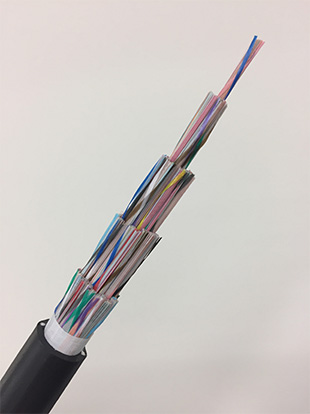 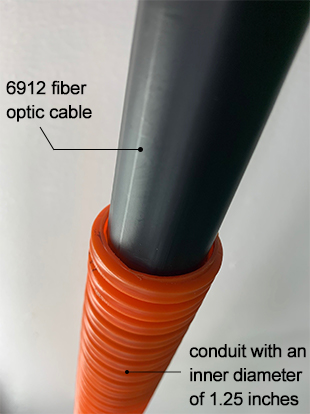
The cable was installed in a 1.25 inch (32mm) conduit with a
maximum length of 1,411 feet (430m) in a North American data
center campus in 2020 to support live traffic. The high fill
ratio in this application is not typically recommended for
Outside Plant (OSP) cable installation. However, in this
application, the end-user was willing to accept the
installation risk in return for maximum fiber density. The
installation demonstrated that FEC’s 6912 fiber optic cable
can be successfully installed into 1.25 inch (32mm) conduit
using appropriate tools, work procedures, and optimum
installation conditions.
“The FEC 6912 fiber optic cable at least doubled the fiber
count possible in a 1.25 inch conduit, compared to competing
available designs,” said Ichiro Kobayashi, General Manager
of optical fiber & cable engineering department, FEC.
Furukawa
PR also on OFS
Website. OFS is a FEC company.
New
Study Shows State Barriers to Community Networks Decrease
Broadband Availability - Community
Networks
That
community networks act as a positive force in the broadband
market is something we’ve covered for the better part of a
decade, but a new study out in the journal
Telecommunications Policy adds additional weight (along with
lots of graphs and tables) which shows that states which
enact barriers to entry for municipalities and cooperatives
do their residents a serious disservice.
“State
Broadband Policy: Impacts on Availability” by Brian
Whitacre (Oklahoma State University) and Robert Gallardo
(Purdue University), out in the most recent issue of the
journal, demonstrates that enacting effective state policies
have a significant and undeniable impact on the pace of
basic broadband expansion in both rural and urban areas, as
well as speed investment in fiber across the United States.
The authors zero in on three particular policies that they
say have among the most significant impact on whether a
community has broadband or not: whether or not the state has
passed laws restricting municipalities and cooperatives from
building and operating broadband networks; whether or not
the state has a broadband office devoted to expansion and
staffed by full-time employees; and whether or not the state
has a funding program dedicated to expanding broadband
networks. Each of the above is considered against general
broadband availability at the national level, but also for
counties classified as rural.
Read
more: Community Networks
What
happens when you remove state barriers:
Mississippi Electric Co-ops Kick Broadband Projects Into
High Gear
Less than two years after Mississippi lifted its ban on
electric cooperative broadband networks, at least 15 of the
25 co-ops in the state have announced plans to provide
Internet access to members, with more on the way.
Read
more
Klein
Tools’® Scout® 3 Pro Line Expands with New Feature: POE
Testing
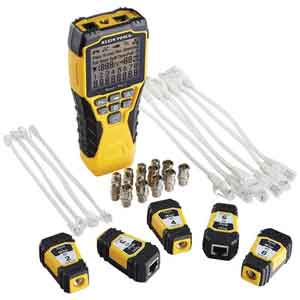
Klein Tools expands the Scout® Pro 3 line of testers with
the addition of a new tester that includes Power over
Ethernet (PoE) functionality. The unit can detect, identify
and test Power over Ethernet (PoE). POE testing has become
more important as applications proliferate but standards are
not always followed.
The Scout® Pro 3 Tester with Test + Map™ Remote Kit is a
versatile cable tester that locates and tests voice, data
and video cables. Use the self-storing remote and Test +
Map™ remotes #2 - #6 for fast, accurate identification.
Identify POE, POE+, A wiring, B wiring and voltage. This
tester also measures cable length.
More
on the Klein Scout 3 Pro
Industrial
Networking Media Converter/Switch Designed For reliability
Phoenix
Digital’s OCR communication module functions as a 100M/1G
fiber media converter and multiport network switch to
provide the multi-fault tolerant, redundant Ethernet
communication network that your operation demands.
Available as a DIN-rail mounted unit, the OCR
communication module works with any variation of Ethernet
or other protocols and is compatible with the control
platform of any automation vendor.
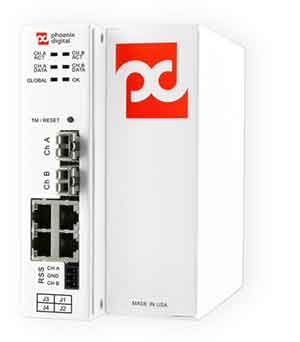
Using
redundant ring-based technology, the OCR fiber SM or MM
PhoenixOCRmedia converter is designed specifically for
industrial I/O peer to peer networks. It features an
industrial hardened case, sets up simply with no
configuration and never requires a software update.
More
information from Phoenix Digital.
Recycling
Fiber Optic Cable - Contact:
Steve Maginnis
LD4Recycle/ CommuniCom Recycling
(Visit
website)
sm@LD4Recycle.com
803.371.5436 |
Technical
On
fiber optic technology, standards, equipment,
installation, etc.
The
FOA Update Page
covers all the new technology and applications we covered
in this newsletter recently. Now you can review all that
new tech at once.

Want
to know more about fiber optics? Study
for FOA certifications? Free
Self-Study Programs are on "Fiber
U®." Looking for specific information? Here's the
largest technical reference on the web: The
FOA Online Fiber Optic Reference Guide.
Try
The FOA's New Online Loss Budget Calculator
FOA has
written many articles about loss budgets, something everyone
involved in fiber optics needs to know and needs to know how
to calculate. We've created a online Loss Budget Calculator
that does the work for you. Just input your cable plant data
and it calculates the loss budget. It works on any device,
especially smartphones and tablets for field use and even
allows printing the results.
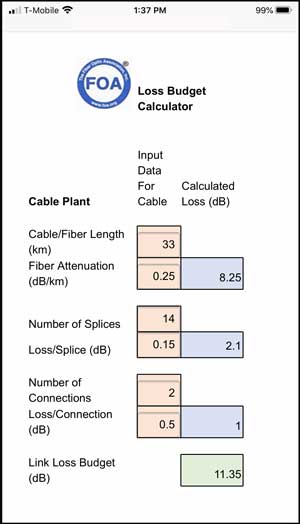
Bookmark
this page (especially on your smartphone: FOA
Loss Budget Calculator Online
|
How
Fiber Works - Total Internal Reflection - For Math
Lovers 8/2020
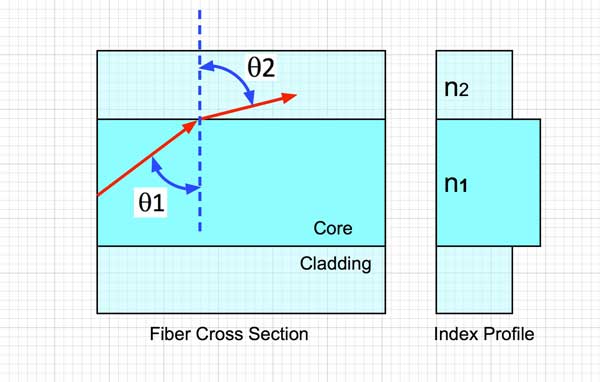
FOA has always had information on how fiber works using
total internal reflection, but we've recently updated our
web page on the subject to include a more complete
explanation using Snell's Law and the math that allows you
to calculate the parameters of the fiber including NA -
numerical Aperture.

FOA
Guide page on Total Internal Reflection
dB
or not dB, that is the question (8/2020)
FOA
has spent considerable space in this newsletter discussing
the confusion of dB measurements. FOA received a comment
from a very technical person we know who used to work for a
major fiber optic instrument manufacturer. He tries to
explain the issue thusly:
"I
submit that optical LOSS can be positive or
negative. I submit that optical GAIN can be positive
or negative. I submit that the CHANGE in optical
power (note that you use the word “change” in a dB
question below) can be positive or negative.
A negative Optical Loss is a gain. A positive
optical loss is a loss. Hence, Optical Loss
can either be positive or negative."
Redefining
relative dB measurements to make them read positive as was
done by some committee rewriting international standards
some years ago is simply ignoring the scientific community
and producing extreme confusion by making gain a negative
number. There is no problem making “loss” just “dB” with
no sign, as long as it’s known that it is represented by a
negative dB number. Likewise “gain” can have no sign as
long as it follows scientific and technical convention
which makes it a positive number.
We
have likened this to “profit” and “loss” in our
explanations. They use similar conventions. Does any
company talk about a negative profit? Of course not.
The
issue has always been the display of data on an OLTS
or OTDR. If instrument manufacturers had wanted to do
it right, instead of ignoring scientific convention
and changing the definition, they would have changed
displays to have no sign for loss or gain but for,
example, make gain readings flash, change color or
show “gain” on the display. There is a convention for
doing that in scientific instruments for readings that
are out of range or otherwise improper.
We
cannot accept under any circumstances that “gain” is a
negative number. Our scientific and technical
education revolts at that!
dBm
- Evidence 8/2020 -
We wanted to show a power meter that reads in both watts
and dB so you can see the correllation, so we found a 20+
year old meter that still had a scale reading in watts.
Here is an example of a power meter measuring in dBm and
microwatts (a microwatt is 0.001 or 1/1000th of a
milliwatt.)
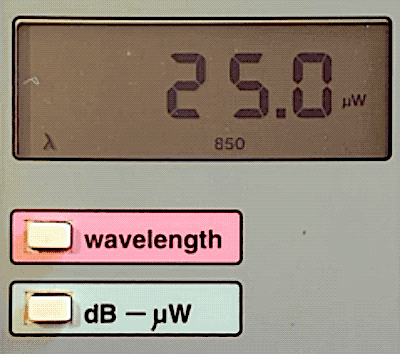
Here
is an example
of the
conversion of
watts to dBm.
This meter is
reading
25microwatts -
that's
0.025milliwatts.
If we convert
to dBm, it
becomes
-16.0dBm. We
can easily
figure this
out using dB
power ratios.
-10dBm is 1/10
of a milliwatt
or 0.100mW.
-6dB below
that is a
factor of 0.25
so 0.1mW X
0.25 = 0.025mW
or
25microwatts.
The other way
to figure it
is -10dB is
1/10 and -6dB
is 0.25 or
1/4th
(remember 3dB
= 1/2, so 6dB
= 3dB + 3dB =
1/2 X
1/2 = 1/4) so
-16dBm is
1/40milliwatt
or
0.025milliwatts
or
25microwatts.
Read a more
comprehensive explanation of dB here in the FOA
Guide.
Splice-On
Connector Manufacturers and Tradenames
7/2020
FOA Master Instructor Eric Pearson of Pearson
Technologies shared a list he has researched of
prepolished splice connectors with mechanical splices and
SOC - splice-on connectors for fusion splicing. This list
shows how widepread the availability of these connectors has
become, especially the SOCs and low cost fusion splicers.
Mechanical Splice
1. Corning Unicam® (50, 62.5, SM)
1. FIS Cheetah (???)
2. Panduit OptiCam® (50, 62.5, SM)
3. Commscope Quik II (50, 62.5, SM)
4. Cleerline SSF™ (50, SM)
5. LeGrand/Ortronics Infinium® (50, 62.5,
SM)
6. 3M/Corning CrimpLok (50, 62.5, SM)
7. Leviton FastCam© (50, 62.5, SM)
Fusion Splice
2. Inno (50, 62.5, SM)
3. Corning FuseLite® (50, SM)
4. FORC (50, 62.5, SM)
5. Siemon OptiFuse ™ (SM, MM)
6. Belden OptiMax?? FiberExpress (SM, MM)
7. AFL FuseConnect® (SM, MM)
8. OFS optics EZ!Fuse ™ (50, 62.5, SM)
9. Sumitomo Lynx2 Custom Fit® (50, 62.5,
SM)
10. Commscope Quik-Fuse (50, SM)
11. Ilsintech Pro, Swift® (50, 62.5, SM)
12. LeGrand/Ortronics Infinium® (50, 62.5,
SM)
13. Greenlee (50, 62.5, SM)
14. Hubbell Pro (50, SM)
15. Easysplicer (SM)
Note: There are additional manufacturers from the Peoples
Republic of China, which advertise on Amazon and eBay.
|
Worth
Reading
Each
month we read hundreds of newsletters and online articles.
These are the ones we think you will find "worth reading."
|
Worth
Reading: 9/2020
If
you are interested in restoration - aren't we all? -
you should also read this article in dpPro magazine
by FOA President Jim Hayes: Damage
Protection Requies Looking Overheas As Well As
Underground - dpPRO Magazine - about
the problems with aerial cables. His previous
article for the magazine was New
Techniques for Fiber Optic Installation.
Damage
Protection Requies Looking Overheas As Well As
Underground - dpPRO Magazine - FOA President
Jim Hayes writes about the problems with aerial cables.
APOLAN
claims passive optical LAN trims costs 56% over
traditional enterprise networks - CI&M
Fiber
Cleaning & Inspection--Best Practices by
Optotest
Break
Through Network Capacity Limits - Expand WDM or Faster
Speeds? - Lightwave
5
rules for placing fiber-optic cable in underground plant
- A new OFS technical guide covers comprehensive
steps for installation of fiber-optic cable in underground
plant.
CI&M
New
Study Shows State Barriers to Community Networks
Decrease Broadband Availability - Community Networks
Connecting
Residents in Boston, MA Next Century Cities
Rural
Telecom Funding Model Must Change ISE Magazine
Three
Applications Guides from Siemon: DAS, WiFi and AV
Lightmatter
- First Optical Processor Chip? - Lightwave
8/2020
“An
adequate connection is no longer a matter of convenience; it
is a necessity for anyone wishing to participate in civil
society,” wrote the New
York Times Editorial Board in an opinion article published
on Sunday, July 18.
The Institute
for Local Self-Reliance weekly newsletter has lots of
interesting articles and links.
"July has seen the release of complementary reports which
shed light on two of the topics we care about a great deal
around these parts: availability and affordability of
Internet access, and municipally-enabled networks. The Open
Technology Institute at New America just published “The
Cost of Connectivity 2020,” while US Ignite and Altman
Solon issued “Broadband
Models for Unserved and Underserved Communities”
Universal
access to broadband is a cornerstone to a strong economy,
Achieving universal access will require community
partnerships. by Alfreda
B. Norman, Sr. VP, Federal Reserve Bank of Dallas
FIBER
TO THE FARM: The co-ops that electrified
Depression-era farms are now building rural internet. Be
sure to check out the high-tech equine installation
equipment.
CENIC
upgrades California education network to 400G between LA
and Sunnyvale. The new 460-mile route is part of an
overall strategy to upgrade CalREN to 400G. From Lightwave.
Next
Century Cities Newsletter - News from cities around
the US including Detroit and New York plus small towns too.
The NYTimes
On Tech newsletter for August 10 has a great animated
graphic of the Internet connections around the world.
7/2020
If
the internet was a utility, could more cities provide it?
Marketplace on NPR interviews Katie Espeseth, the vice
president of new products for Chatanooga's EPB. She says
that internet access is a utility.
Infrastructure
Get Some Respect, NY TImes "On Tech" "The magic
of the internet requires a lot of very boring stuff behind
the scenes. "
From the June (6/2020) FOA Newsletter, but worth
repeating:
“For nearly 100 years, cooperatives have been the most
successful model for connecting rural Americans to the
utilities they need to keep their homes, businesses, farms
and schools running,” said Christopher Mitchell, Director of
the Community Broadband Networks initiative at the Institute
for Local Self-Reliance (ILSR).
From Cooperatives
Essential to Bringing High-Quality Fiber Internet Access
to Rural America
Read the ILSR report on coops here:
Cooperatives
Fiberize Rural America: A Trusted Model For The Internet
Era
A few important takeaways:
- More
than 210 cooperatives across the country offer gigabit
Internet access to residents and businesses.
- 82%
of North Dakota and 53% of South Dakota landmass is
served by fiber from cooperatives, and residents enjoy
some of the fastest Internet access speeds in the
nation.
- Since
2017, some states have eased restrictions on cooperative
broadband networks, while others have gone even further
by enacting legislation to facilitate the deployment of
cooperative broadband networks.
- A
series of local stories highlights how broadband has
changed lives by improving access to education,
healthcare, and economic opportunities.
- Cooperatives
have proven that this is a model that works. With
increased support from federal and state governments,
they will continue to connect Americans in rural areas
to economic and educational opportunities otherwise
denied to them.
Read
the full report here.
Look at the ILSR
Newsletter too - it covers rural broadband projects
well.
Worth
Reading - News Summary - Past Links Worth Repeating
Next
Generation PoE (Nexans) The New Power over
Ethernet Standards Deliver More Power, Speed, and
Efficiency
Demystifying
5G (Corning): Do you know 5G’s 3 major
benefits, 8 technical goals that deliver those benefits,
and 4 technology building blocks that meet the technical
goals?
Pentagon
official: FCC decision on 5G threatens GPS, national
security
Internet
Statistics and Facts, 2020: Interesting, easy
to get lost here!
Understanding
The True State Of Connectivity In America - 65% of US
counties receive broadband speeds below industry
reports.
Why
Businesses Need Fiber Connectivity, from
Spectrum CATV. Yes, it's a sales pitch, but they make good
points and it indicates they are serious.
DIRT
Report On Damage To Utilities
Common Ground Alliance (CGA) annual DIRT report provides a
summary and analysis of the events submitted into CGA’s
Damage Information Reporting Tool (DIRT) for the year
2018. The complete report is available for download
here. In addition, there is an interactive
dashboard that allows users to filter the data
more by factors contributing to damages.
Structured
Cabling News - a website and weekly
newsletter about cabling.
The
Internet Master Plan for New York City.
The New York City Internet Master Plan is a
comprehensive framework for the infrastructure and
services that provide connectivity to New York City
residents and businesses. This Master Plan will guide
City actions and public-private partnerships to
transform New Yorkers’ access to this essential
infrastructure for generations to come.
Fiber
Trivia From Corning.
Why
understanding PoE now is crucial for electricians
- To ring in the new decade, IDEAL Networks is urging
today's electricians to master new skills and equipment to
cope with the growing use of PoE in intelligent lighting
applications.
Smart
City Projects: Smart city initiatives are
underway across the country. But they face funding and
technology challenges. Many cities want to upgrade
infrastructure to improve resident experience, safety and to
generate revenue.
The
Future Of Work Is Skills - So Stop Worrying About
Degrees - The
reality is the future of work is about skills, not just
degrees. (FOA Newsletter Feb 2020)
Want
a White-Collar Career Without College Debt? Become an
Apprentice (NYTimes)
Apprenticeships probably began with the first jobs, where
young people work under experienced craftspeople to learn
a trade. In the last century, they became more organized
under labor unions like the International Brotherhood of
Electrical Workers, one of the FOA's oldest and biggest
approved school systems. Today, apprenticeships are
expanding as young people look at viable alternatives to
loading themselves with debt while attending college.
The
job market is hot. So why are half of U.S. grads
missing out?
VIAVI
Books On Fiber Optic Testing (2 volumes) - They're back!
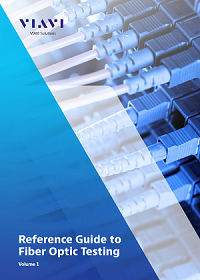
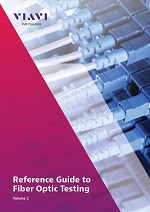
Besides
the FOA reference materials, two JDSU/VIAVI textbooks,
Reference Guide to Fiber Optic Testing, Volumes 1 and
2, were used as references for some of the FOA courses
and are recommended for instructors and students. The books
are available from VIAVI as eBooks and the everyone should
download them and recommend them to others.Download yours
now. Volume
1. Volume
2. Viavi Books
50th
Anniversary of The Development of Low Loss Fibers
A history of the development of low loss fiber, a
fascinating story by Jeff Hecht on the OSA (Optical Society
of America) website.
How
OFS Makes Fiber
Interesting YouTube video on how fiber is made. Perhaps a
little too much "show biz" but fascinating. If you have ever
seen fiber manufacture, look at this video. You will be
amazed at how big preforms have become!
How
Nexans Makes Copper Cables - compare the process
to fiber - don't most of the machines look similar?
The
True Cost of Telco Damages (what backhoe fade or
target practice can cost)
Rural
Electric Cooperatives: Pole Attachment Policies and
Issues, June 2019.
Clearfield-FOA
Certification Training Clearfield is now
offering their customers an FOA
CERTIFICATION course. This course provides
a basic understanding of fiber optic technology, as well
as Clearfield product knowledge and how Clearfield’s
integrated product systems work together in a fiber
network.
Substandard
Contractors - Fiber Optic Knowledge Doesn't Always
Trickle Down (EC Mag)
Another
Source Of Articles On Fiber
FOA
President and editor of this newsletter Jim Hayes has also
been writing a column in Electrical
Contractor Magazine for almost 20 years now.
Electrical contractors do lots of fiber work and this column
has covered some topics they are interested in including
installation processes, network design, fiber applications
and a lengthy series on dark fiber - what it is, how's its
used and how it benefits the growth of communication. A
recent web site redesign makes it easier to browse all these
articles - just go to http://www.ecmag.com/contributing-authors/jim-hayes
and you can see all of them. |
Q&A
Tech
Questions/Comments From FOA Newsletter Readers Worth
Repeating
The
FOA Fiber FAQs
Page (FAQs = frequently asked questions) gathers
up questions readers have asked us (which first ran in
this newsletter) and adds tech topics of general
interest.
|
Good
Question!
The
FOA Fiber FAQs
Page (FAQ s = frequently asked questions) gathers
up questions readers have asked us and adds tech topics
of general interest.
Questions
From FOA Newsletter Readers
September 2020
Fiber Optic Regulations for Cable Markers
Q: I
wanted to inquire on any federal regulations there may be on
Cable Markers to alert citizens of fiber optic conduit
underneath the ground. We have had conflicts with installers
placing vertical white and orange markers in right-of-way in
residential areas
A: (Fron
Scott Landes, Rhino
Markers and
dp-PRO magazine) There are no regulations on
communications markers. Gas/Oil pipelines must be marked and
there are specifications for those markers. Curb markers can
be effective in residential areas. However they often do not
have a warning message telling people to call 811. They are
not as effective as marker posts, but if they are used along
with soil markers, which can be mowed over, you can create
an effective system.
Replace Coax With FIber
Q: I
read some of your interesting articles on network upgrades
and I was wondering if you can spare some suggestions.
I might be able to purchase an old non-pressurized
underground coaxial network, basically an old coaxial cable
inside a conduit. Is there any ‘cheap’ way to replace the
old coaxial cable with a new optic fiber cable, perhaps
simultaneously pulling out the old coaxial cable and pulling
a new fiber tube inside the old conduit?
A: If you own the conduit, it should be relatively
easy to remove the coax and replace it with fiber optics.
Our advice would be to pull the coax, pulling in a pull tape
as it is pulled out, clear the conduit and pull in the
largest microduct assembly you can - 6-7 12mm ducts is
usually only 40-50mm in diameter. Then you can blow in a
number of microcables. A 288 fiber cable in each duct adds
up to a lot of fiber or a lot of leasing to service
providers.
We also ran an article in a FOA
Newsletter "New Way To Install Fiber In Old Coax” that
describes how to replace the center conductor and dielectric
of the coax with fiber.
Testing Bare Fiber
Q:
I was wondering if there’s an equipment for a visual
fault locator but on a bare fiber cable. I know there’s a
bunch of VFL that needs an ST connector or LC connector to
use. I’m just wondering if there’s one for bare.
A: You can get a gadget called a “bare fiber adapter”
that allows you to strip the fiber, cleave it and clamp it
in a connector - then attach to a VFL or other source. If
you only have short lengths of fiber, you can probably get
by without cleaving the fiber as enough light will be
captured with a broken fiber.
August 2020
Mystery Connector From Wind Farm (See above)
FTTH Connections
Q:
My home is current wired with coax for cable TV. Considering
FIBEROPTICS but do not want any changes/additions to
the internal house wiring. Can an adaptor be installed
external to the house to make the conversion from FIOPTICS
to coax without any need to disturb the current wiring?
A: The adapters used for fiber to the home (FTTH) are
called ONTs - optical network terminals - and they convert
from fiber to coax for TV, two wires for phones and Cat 5 or
WiFi for your computer. You should not need to change the
internal wiring to use FTTH services.
July 2020
Kinking Cables
Q:
i was pulling some MM fiber in pipe today and i had to
go to a different riser a few floors below so i taped the
fiber to a near by pipe to stop it from free falling. When
my coworker a floor below took my remaining slack i went
back to where i tied the fiber to the pipe and i noticed it
was bent sharply going into the pipe but luckily i did not
pull the cable hard once i felt it get tight. I pulled slack
back and inspected the cable but there was no indentation or
sign of a kink. Is this cable completely ruined,should i be
concerned??. Its a multimode corning fiber.
A: The key is if the fibers in the cable test OK.
Corning MM fiber is bend-resisitant fiber and is immune to
most abuse. If it tests OK, you probably don’t need to worry
about it.
Rodents Chewing Cables
Q:
I wonder what you can tell me, or point me to,
regarding rodents and optical cables. I know that rodents go
for electrical cables, even low voltage. von Siemens had to
dig up the first underground distance telegraph cable
because they chewed through the gutta percha. And I know
that their teeth keep growing, and chewing hard stuff, I
guess including wire but not armor, apparently is part of
what they're designed to do. But why fiber?
A: The issue with most cables, fiber or copper, is
the plastic used for the jacket is soft and tastes good to
rodents. The solution is to add armor over the first hacker
and add another jacket to that. Or put the cable inside
ducts. There have been attempts to make the plastic taste
bad that as far as I know failed. In vaults underground,
they put material in the bottom of the vault to prevent
rodent entry.
I remember a great joke in the standards committees in the
80s was a description of the test for rodent penetration -
probably from AT&T who had most standards before EIA/TIA
or ISO. It was something like this - tow cages, one with
standard-sized rodent, other with cable and door between.
Rodent was starved for certain period and then released to
chew cable for fixed period of time to determine cable’s
vulnerability. The joke centered on the “standard rat."
June 2020
Multiplexing
Signals
Q: If a network has 4 10gig lines...how could they or
can these be "bundled" into 40 gig??
A: You multiplex the signals - send one source of
data as a packet in a time slot, then the next 3 in order.
At the other end, you separate them into the original
packets and send diverse ways. Of course, multiplexing the
10G signals into 40G requires speeding up the clock 4 times.
Installation Costs
Q: Do you have any information regarding the cost of
installing the fiber underground?
A: There is no one answer to your question. The cost
of underground construction is a complex function of:
Geography: costs are like salaries, they vary depending on
the locale, NY is much higher than Cordelle, GA for
example), it’s cheaper where the ground is soft dirt vs
rocky, not near wetlands, etc. Urban, suburban and rural
areas are vastly different.
In addition, the cost of all the permits, getting “call
before you dig” assistance and even police details during
construction will be determined by the locale and can vary
widely.
Installation type: trenching and burying conduit or ducts,
trenching and direct burial, microtrenching with microducts
and blowing in cable, directional boring or just pulling
cable into existing ducts.
If the property owner or permit issuer requires “dig once”
where the contractor installs a number of ducts (a very
smart idea), the first installation costs more but later
installs cost much less.
Then there is the cost of the cable, a function of cable
construction, fiber type and number of fibers, number of
splices or drops, etc.
The SOW (scope of work) should call for documentation and
testing. If the SOW requires GIS data and comprehensive
testing - and it should - the cost will reflect that.
So underground installation can cost perhaps as little as
$15-20/ft to as much as $100-200/ft or more. Or as Google
Fiber found in Nashville, underground is not possible when a
town sits on bedrock.
May 2020
Lashing
Aerial Cable With Cable Ties?
Q: I am considering an electrical job installing
fiber optic aerially on a messenger cable.
I have seen the cable tie method of lashing the fiber to the
messenger. Would you recommend this method considering the
cost of a lashing machine for a single project and if so
what would be a good distance between ties for the proper
support of the fiber to the cable.
A: The normal way to attach an aerial cable to a
messenger is lashing the cable with stainless steel wire. If
you use cable ties, you would need ensure the cable doesn’t
droop and the cable ties are designed for outdoor use in the
sun over a long time (stainless steel ones are available).
How long is the span? If it’s more than 100 feet, I think I
would go with lashing. If you don’t have a lasher, you can
rent one. You will need a bucket truck anyway.
Power Budget For PON
Q: Do you have any information on guidelines for
avoiding over saturation in a PON network? Our ONTs have a
power window of between -8dBm and -27dBm. OLT
transceivers transmit at around 4dBm. So our designers
budget for no more than 28dB of loss. However, some ignore
the -8dBm maximum power spec. With a short run from
OLT to ONT and a small splitter, installers are sometimes
seeing light levels at the ONT at around -6 to -7dBm. What
would you recommend as a minimum loss budget in this
case? Do we need margin?
A: The GPON spec does have a max power at the ONT
generally expressed as a minimum loss in the cable plant -
13dB for GPON. There is a graph about halfway down this page
(https://foa.org/tech/ref/appln/datalink.html) that shows a
graph of BER vs Receiver power. To have a link work
properly, it must have sufficient power to be above the
minimum S/N - signal to noise - ratio for the link but not
so much power that it saturates the receiver.
This is a very common situation in telco networks where
links are designed for relatively long distances but may be
used on short ones - e.g. a 40km link being used over 10km
in a city. Their solution is simple - add an attenuator
(https://foa.org/tech/ref/appln/attenuators.html). Lots of
these links use attenuators.
In a PON, there are several ways to go. 1) Brute force -
test each ONT and add attenuators as needed. Techs could
carry a selection of 5dB or 10dB attenuators to get at least
to the 13dB minimum needed. 2) Rather than require testing
at each ONT, have the designer do a loss budget based on the
link length and specify a minimum splitter in the link (8:1
would probably work well) which would probably be cheaper
than testing and adding lots of attenuators.
Midspan
Drop Cables
Q: I
am working on a project that has 5 sections, consisting of 5
miles each section, CCTV, detectors, DMS connected by 192
count fiber. We were directed to use the consultants
plans from the first section as a guide for uniformity for
the remaining contracts. The attached fiber detail
shows a 4 fiber drop cable going to the ITS device. I
was thinking to take all 12 fibers to the device and back
for redundancy? Also, if we did use the 4 fiber drop
cable, I didn’t understand why they would splice the other
10 thru cables and instead leave them intact? Is there a
preferred method for a drop cable to a device or just
preferences?
A: We are not sure why they do it the way they do.
Perhaps the designer was not familiar with midspan access
which would preclude having to make the other splices. Using
a 12 fiber drop cable would be more expensive and perhaps
unnecessary unless the device being connected is in a
location where a small cell site might be located. They may
also have uses for those other fibers that require a
connection through the drop point. We”d suggest to the
designer that midspan access might allow saving the 10
splices at each drop.

The
word on the "Dig Once" program is getting out - FOA is
getting calls from cities asking us for information and
advice. Here are some links:
The DoT page on the administration’s Executive Order: http://www.fhwa.dot.gov/policy/otps/exeorder.cfm
From the Council of State governments: http://www.csg.org/pubs/capitolideas/enews/cs41_1.aspx
From the city of San Francisco: http://sfgov.org/dt/dig-once
An article about Dakota County, MN: https://muninetworks.org/tags/tags/dig-once
And
the one to download and hand out:
A “How To” Guide from The Global Connect Initiative: https://share.america.gov/wp-content/uploads/2016/04/6.-GCI-Dig-Once.pdf
Fiber Optic Cable Plant - The Finished Product 4/2020
In
April, FOA received inquiries from several sources that all
deal with the same subject - what is involved in the
specification and acceptance of a cable plant at the end of
a installation project. And what are reasonable
specifications for a cable plant.
FOA has a lot of documentation on a project involving
designing and installing a cable plant in the
FOA Online Guide and our Textbooks, but the acceptance
process has usually been relegated to a few paragraphs. We
decided to add a page
on project "Deliverables" in the FOA Guide that covers
this topic in more depth. This page looks at a project, goes
into some depth on loss budgets and includes links to FOA
tech documents to help you investigate further.
Correction: In the article, the original list of fiber
specs for G.652 was wrong. It should be 0.4dB/km @ 1310nm.
Deliverables
in the FOA Guide
Is
There A Standard For Fiber Optic Installation?
Another
question we get often is "Is there a standard for fiber
optic installation." The answer is yes, but not from the
usual standards groups you might expect. Over 20 years ago,
the National Electrical Contractors Association (NECA) asked
FOA to help create a standard for installation. That
standard, ANSI/NECA/FOA-301 has been updated three times
already and is about ready for another update.
Unlike most of those groups who charge you a fortune for
standards, FOA covers the cost so ANSI/NECA/FOA-301
is available free from FOA.
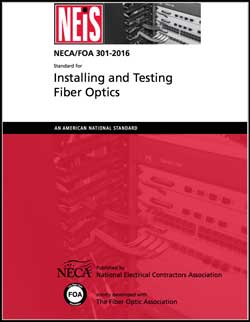
Download
your free copy of ANSI/NECA/FOA-301
here (PDF)
Older
questions are now available here.
|
Training /
FiberU
News and resources to help you learn more and stay
updated.
Find
a listing of all the FOA-Approved schools here.

Free
online self-study programs on many fiber optics
and cabling topics are available at Fiber
U, FOA's online web-based training website.
Free
online training at Fiber U
The
FOA has >100 videos on  |
Welcome
To A New California School
Baseband
U, Corona, CA - FOA Approved School #384

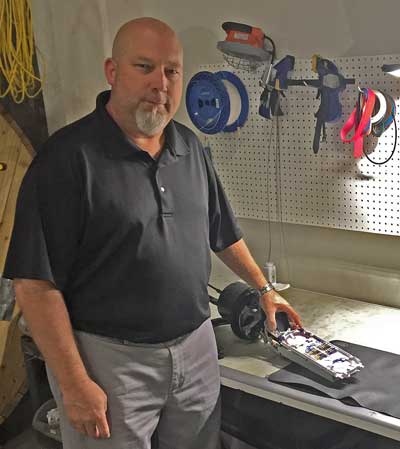
Jim
McConnell, FOA Certified Instructor, at the new school
Baseband U.
For Schools and Instructors, Program Managers at Large
Organizations Requiring Training
FTTH
Council MENA and Corning Webinar On New Training Methods
This
webinar will share lessons learned from award winning
training programs delivered by Corning for Tier 1 operators
and government organizations in the MENA region, and present
how integrated approaches to training programs managed as
projects, combined with educational technology and
leadership development methods, have produced highly
desirable outcomes and supported fiber optic workforce
development objectives for the region. This, including
programs for diverse audiences, including learners and
stakeholders from different cultural backgrounds, functional
roles, and levels in their respective organizations.
The seminar will be given by Jerry Morla of Corning, FOA
Master Instructor and Director
Thursday, 24th September at 4:00 pm UAE Time, 8:00 am EDT
Register
here.
FOA
School BDI
Datalynk is offering classroom training with Covidd
precasutions and also remote classes over most of the US.
FOA
Master Instructor Eric Pearson of Pearson
Technologiesis now offering classroom training with
Covid precautions - 9/2020
Contact
Eric for details on his classes.
Classroom
Training Is Adapting To The Pandemic 8/2020
FOA
Director and instructor Tom Collins sent photos of his
recent IMSA/FOA CFOT class held in Florida. It shows how Tom
dresses for the job and how his students are social
distancing. More FOA classes are being held now using
techniques like these.
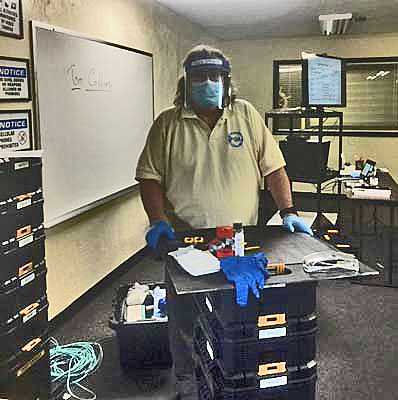
Instructor Tom Collins perpared to teach in the classroom.
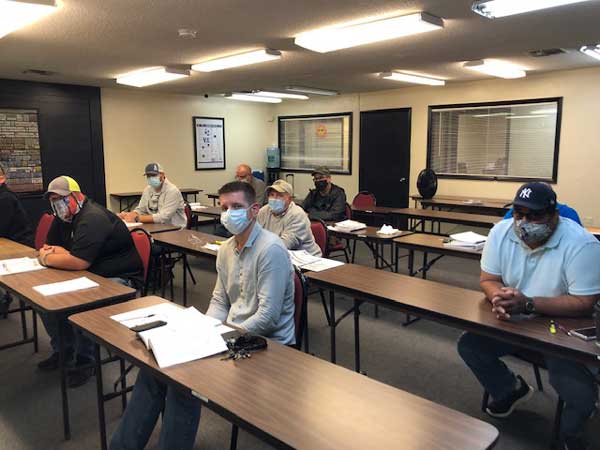
Students with appropriate distancing.
Training
Is Back - Made Safer (6/2020)
FOA
schools are starting to offer classes at their facilities
again to provide the personal interaction with an instructor
and hands-on labs, but some things have changed to provide
social distancing. Serge Rodrigue at Fibre
Zone in Quebec, Canada sent photos of his new lab
setup that includes individual lab stations with plexiglass
barriers.
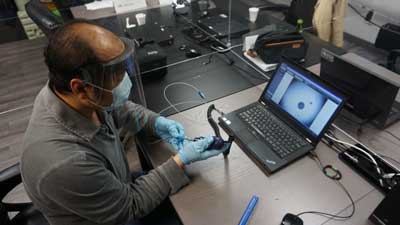
Students are following safe working protocols - masks and
gloves - to make classes safe and meet local government
requirements for social distancing.
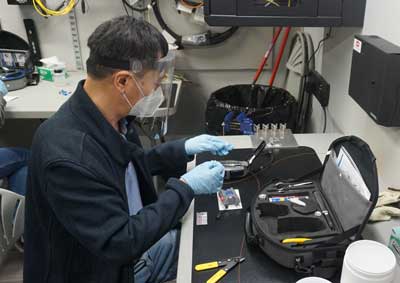
Contact Fibre
Zone in Quebec, Canada for
more information on their classes.
FiberNext in New Hampshire has also rearranged classrooms
for safer classes and has begun training in their facilities
in Concord, NH.
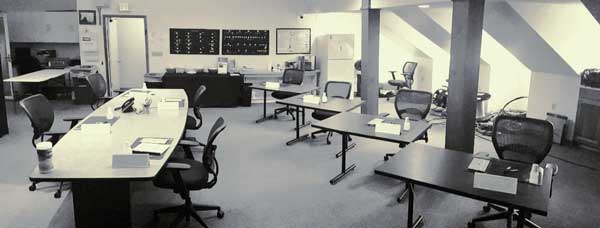
Contact FiberNext
in Concord, NH, USA or
more information on their classes. Also ask about joining
their CFOT
Club for savings on products and training.
Fiber
Optic Training Online - Simulations and Do-It-Yourself
Hands-On Training (6/20)
Simulating
Optical Loss Testing
FOA has been experimenting with simulations,
especially for testing since test equipment is
generally not inexpensive and requires a selection of
cables for reference test cables and cables to test.
We have had an OTDR Simulator based on the software
for an OTDR and a selection of traces for analysis.
Now we've created an optical loss simulator that uses
some web programming to allow stepping through the
process of setting up and testing a cable with a light
source and power meter.
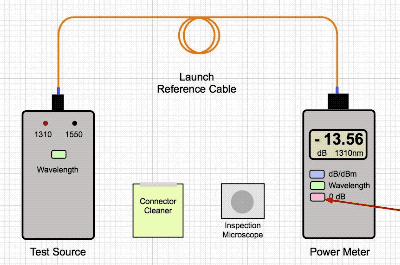
The simulation provides virtual meter and source,
inspection microscope, cleaners and a selection of
cables needed for testing. In the animation above you
can see one of the user interactions - the student
must use the proper button to set the "0dB" reference.
The loss simulator also requires the student use the FOA
Loss Budget Calculator to calculate the expected
loss of a cable under test, compare it to the measured
loss and make a Go/NoGo decision.
We even provide two versions of the simulator -
singlemode and multimode. The singlemode version tests
an OSP cable and then has the student compare OTDR
traces to troubleshoot problems. The multimode version
shows the effects of modal conditioning on multimode
measurements.
At the end, we've even added a wrap-up of the
techniques of loss testing and a quiz.
We added the loss simulator in the new Fiber
U DIY Basic Skills Lab for a virtual hands-on
testing lab.
Check out the FOA
Insertion Loss Simulator here.
DIY (Do-It-Yourself) Labs (6/20)
Knowledge
is easy to get online, but learning skills requires
"hands-on" practice and that requires tools and
components to practice with. Here at FOA, we've been
working on an online course that could help many
techs learn new skills or improve others using an
online self-study course and their own equipment. Recently,
we have updated the materials in the Fiber
U Fiber Optics Basic
Skills Labs which includes cable
preparation, splicing, termination and testing.
And we have created a Basic
Skills Labs - Copper Premises Cabling to
cover UTP (Cat 5) and coax copper cable
processes. As with all Fiber U courses, these
are free.
Several times in the FOA Newsletter we've discussed
the Fiber
U Basic Skills Lab. This online DIY lab course
assumes you have your own equipment to use for the
labs, but most novices, unless they work for a larger
company already in fiber optics, will not have
equipment. FOA instructors have found a solution:
purchase inexpensive equipment online. What they have
found are many low cost tools and components that are
perfectly suited to training.
If
you do not have tools or equipment and want to
purchase them, there is a new
Fiber U DIY Basic Skills Lab lesson with
directions on how to purchase inexpensive tools
online and use them to learn basic fiber optic
skills. Those tools and components are what we
describe here.
For example, you need a fiber cleaver
for splices and prepolished/splice connectors. A good
cleave is essential for a good splice or termination
with a splice-type connection. Good cleavers are now
available online at prices in the US starting at
$20US.
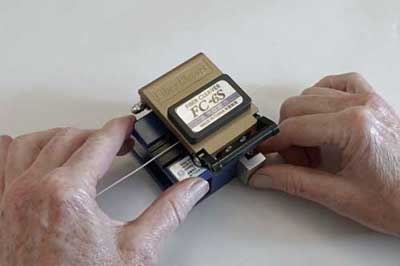
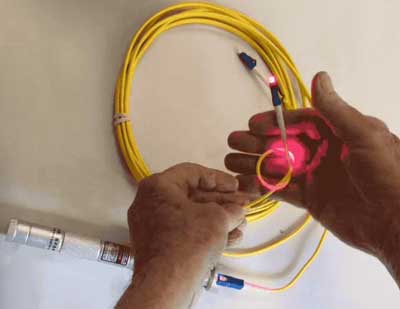
Besides the cleaver, another really good tool for
learning or teaching is a visual fault locator. These
devices used to be very expensive, but now are
available online for $10-20.
Many online sellers offer sets of fiber optic tools in
a kit for very low cost.
With plenty of tools available online, the next things
you need are components to practice on. No problem
here either. You need a patchcord, some mechanical
splices and some prepolished/splice connectors. The
connectors and splices are available from online
sellers for ~$1 each, easy to afford plenty to
practice on.
FOA has used all these available parts together into a
do-it-yourself
hands-on lab as part of the Fiber U Basic Skills
Lab. You can do this yourself at a very low
cost. We
even provide directions on how to search for
suppliers of these tools and components.
Caution!
FOA has not exhaustively tested these tools or
components enough to recommend them for field use. The
work we did with them to create teaching labs shows
they are certainly good enough to use for teaching the
installation processes in a training lab. We suggest
read the buyers reviews and do some of your own
testing before using them for anything other than
training and practice.
FOA
Guide "Basics Of Fiber Optics" Now Available in Portuguese
(6/2020)

FOA has
now translated the Basics of Fiber Optics textbook in our
Online Guide into Portuguese, joining Spanish and French
translations. For those speaking Portuguese, we have the
technical information and for schools we also have
curriculum available.
Here
is the FOA
Guide in Portuguese,
Spanish and
French
translations.
Time
To Learn - Online - (Update 4/5/6/8 2020)
Schools
have generally been closed during the pandemic lock-downs,
so FOA has been working with some of them to create new
online learning experiences that can in some cases lead to
certification online. FOA certifications are still based on
the KSAs - knowledge from the classroom, skills from the
labs and abilities judged by instructors or proven by actual
experience.
ZOOMing
Much of what we're doing benefits from the capabilities of
"Zoom." Others have created videoconferencing apps, but none
work so well, especially with limited bandwidth. We've seen
remote labs that have an instructor showing students how to
use the tools they were sent then watching them duplicate
their actions. We have worked out methods to use Zoom to
proctor FOA's online certification exams.
Blended
Learning
While most FOA schools have suspended in-person training
during this period, some are offering a "blended
learning" option. That means that students sign up for a
FOA certification course, take the classroom sessions on
Fiber U with the assistance of a FOA certified
instructor. Now online instruction can include reviewing
the labs using the Fiber
U Basic Skills Labs, then when it's possible to attend
classes at the school, complete the hands-on labs and
take the FOA certification exam.
Online Remote Labs
Alternatively, some schools are experimenting with
"remote labs," where the students get sent tool kits
and components and labs are conducted by
videoconferencing. Before the labs, the students may
watch demos by their instructor on videoconferencing
and/or review the relevant "virtual hands-on" lessons
in the Fiber U Fiber
Optics Basic
Skills Labs so they will already know
the steps in the exercises. And
Fiber U has the new
Fiber U DIY Basic Skills Lab lesson
with directions on how to purchase
inexpensive tools online and use them
to learn basic fiber optic skills. Videoconferencing
allows the instructor to remotely monitor their
work and provide help as needed. Contact
the FOA for more information.
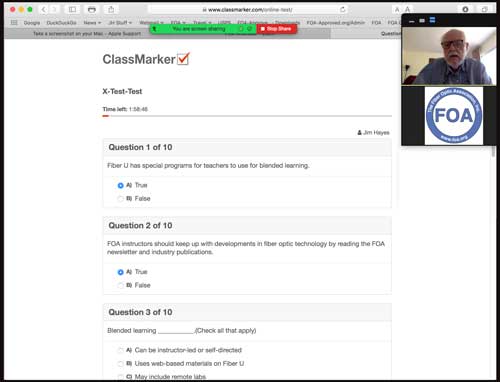
FOA Zoom Exam Proctoring
Online
Certification Testing
FOA has all its certification tests available
online, both for use by our schools and by our
direct "Work
to Cert" applicants. All FOA certification
tests require a proctor to oversee the applicant
taking the exam. In this time of social
distancing, getting a proctor can be difficult, so
FOA now has procedures for online proctors
administering the exam. Contact
the FOA for more information.
OJT - On-The-Job-Training
Many novices get a job and learn on the job. They
usually have an experienced tech who helps them gain the
knowledge and learn the skills they need to
perform their job. Thinking about this in relation to
the
FOA KSAs, the knowledge, skills and
abilities needed by a fiber optic tech, the tech
will learn skills but not the basic knowledge that helps
them understand the processes involved. FOA can offer
help here, using our Fiber
U online self-study programs. While the tech
learns on the job, they become a Fiber
U trainee, getting the knowledge they need,
while working under their "mentor" at work. This is
particularly good for contracting companies who need
techs but do not have the usual training courses
available. Interested in OJT programs? Contact FOA
for more information.
Can
You Learn Hands-On Skills Online?

Knowledge is easy to learn online, but learning skills
requires "hands-on" practice and that requires tools and
components to practice with. Here at FOA, we've been working
on an online course that could help many techs learn new
skills or improve others using an online self-study course
and their own equipment. Recently,
we have updated the materials in the Fiber
U Fiber Optics Basic
Skills Labs which includes cable preparation,
splicing, termination and testing. And we have created a
Basic
Skills Labs - Copper Premises Cabling to cover
UTP (Cat 5) and coax copper cable processes. As with
all Fiber U courses, these are free.

FOA offers free online self-study programs at Fiber
U. Many users are preparing for FOA certification
programs - taking courses at our schools or using the "Work-to-Cert"
program. Some of our schools are requiring Fiber U programs
as prerequisites for their classroom courses so they can
spend more time on hands-on activities.
New
FOA Approved School: Central
Electrical Training Center, FOA
School #656.
Find
a listing of all the FOA-Approved schools here.
FOA
School Offers Toolkit With Online Training
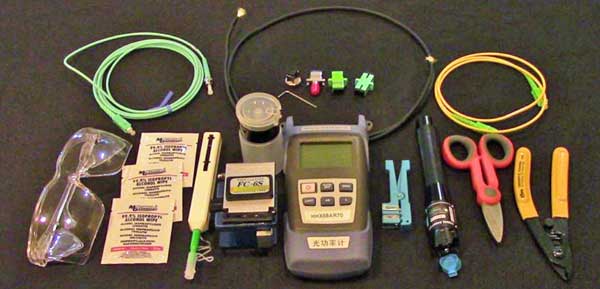
Slayton
Solutions (FOA Approved School #156) is offering a simple
fiber optic tool kit that includes a 29-piece set of fiber
optic tools and a power meter along with training videos
and online instruction for only $499. 29 Piece Kit
includes all tools and devices a technician needs to
install fiber optic connectors and test optical
power. Information
on the kit is available on YouTube.
You can contact them for more information at
slaytonsolutions@sbcglobal.net
or https://www.fiberopticsinstitute.com
|
Publications /
Resources

|
FOA
Loss Budget Calculator On A Web Page 5/2020
FOA has
written many articles about loss budgets, something everyone
involved in fiber optics needs to know and needs to know how
to calculate. We recently discovered how to get a
spreadsheet ported to a Web page, so we created this web
page that calculates loss budgets. We have an iOS loss
budget app, but with this web page, you can calculate loss
budgets from any device, smart phone, tablet, laptop, or
desktop computer that has web browsing capability.

Bookmark this page (especially on your smartphone): FOA
Loss Budget Calculator Online
 We are
continually updating the Online Reference Guide to keep up
with changes in the industry and adding lots of new pages of
technical information. When you go to the FOA
Guide Table of Contents to see the latest updates -
look for
We are
continually updating the Online Reference Guide to keep up
with changes in the industry and adding lots of new pages of
technical information. When you go to the FOA
Guide Table of Contents to see the latest updates -
look for  . .
Recent updates:
10GPON
on PON Protocols in the FOA Guide.
Coherent
Communications Systems in the FOA Guide.
Updated
(and more illustrations): Basic
Fiber Optic Jargon, OSP
Fiber
Optic Jargon and Fiber
Optic Jargon for managers.
Fiber
Optic Network Restoration
Fiber
Characterization goes in to more depth, why fiber
characterization is important and how to interpret results.
Fiber
Optic Network Management for managers
FOA
has created a section on OSP
Construction and a Fiber
U course based on it.
FOA
Guide section on inspecting and cleaning connectors.
Go
to The
FOA Online Fiber Optic Reference Guide.
FOA Reference Books
Available Printed or Kindle Books
The
fiber book is available in Spanish and French (printed) and
Portuguese (online). The design book is available in Spanish
(online)








FOA has
reprinted "Lennie
Lightwave's Guide" on its 25th anniversary in
a special print edition.
Lennie
and Uncle
Ted's Guides are online or as free iBooks on iTunes.


Click
on any of the books to learn more.
- Fiber
Optic Safety Poster to download and print
Resources
For Teachers In K-12 And Technical Schools
Teachers in all grades can introduce their students to
fiber optic technology with some simple demonstrations.
FOA has created a page for STEM or STEAM (science,
technology, engineering, arts
and math) teachers with materials appropriate to their
classes. Fiber
Optic Resources For Teachers.
|
Safety
|
On
Safety
FOA
considers safety an integral part of all our programs,
curriculum materials and technical materials. We start all
our textbooks and their online versions with a section on
safety in the first chapter, like this: Before
we get started - Safety First!
There are pages on the FOA Guide on Safety
procedures Including Eye Safety and. Digging
Safely
And a YouTube lecture: FOA
Lecture 2: Safety When Working With Fiber Optics
In our OSP Construction Section, these pages cover many
safety issues including those related to the construction of
the cable plant: Project
Preparation And Guidelines, Underground
Cable Construction, Underground
Cable Installation and Aerial
Cable Installation.
There is even a safety poster for the fiber activities: PDF
Safety Rules For Fiber Optics
The FOA is concerned about safety!
There
is a toll-free "call before you dig" number in the USA:
Dial 811
See
www.call811.com for
more information
The
Common Ground Alliance has an excellent "Best
Practices Guide" online
- The
US Department of Transportation has a website called "National
Pipeline Mapping System" that allows one to
search for buried pipelines.
Why
We Warn You To Be Careful About Fiber Shards
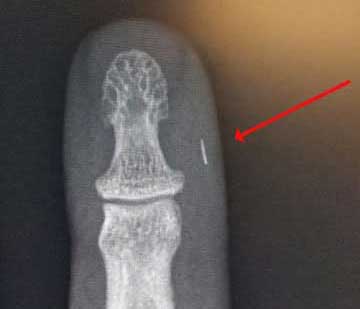
Photo courtesy Brian Brandstetter, Mississauga
Training Consultantcy
Safety
Leader Magazine
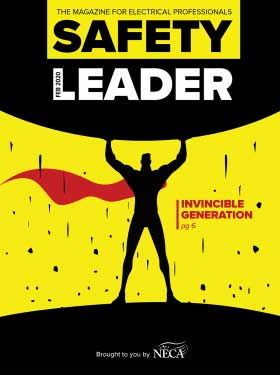
Safety Leader, a new quarterly magazine, informs and
educates electrical contractors on safety from various
angles—electrical, workplace, PPE, regulations, leadership,
line work, NFPA 70E, and more. Safety Leader is bundled with
ELECTRICAL CONTRACTOR in February, May, August and November.
To receive Safety Leader subscribe
to ELECTRICAL CONTRACTOR magazine here or subscribe
to the ELECTRICAL CONTRACTOR newsletter here.
2020
Conference On Damage Prevention Cancelled But Goes Online
You can
watch FOA's presentation "New
Construction Techniques In Fiber Optics" on YouTube.
Next
Conference On Damage Prevention Scheduled for 2021
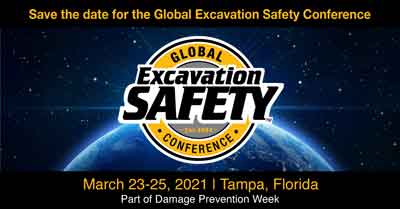
Global
Excavation Safety Conference & Expo, the
premiere international event in the damage prevention
industry, was supposed to be March 24-26 but was
cancelled due to the pandemic. 2021's program will be in
Tampa.
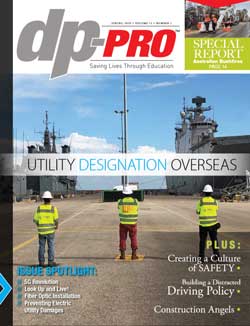
The magazine, dp-Pro, sponsor of the conference, has
also published it's latest issue with an article by FOA
on "New Construction Techniques in Fiber Optics" and a
overview of the FOA. You
can read the magazine here.
Best
Practices Guide For Underground Construction
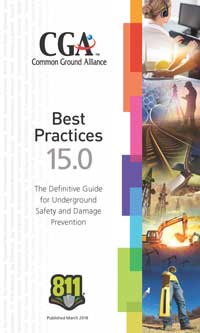
We
assume you are familiar with the "One Call" and "Call
Before You Dig" (811) program, but are you also
familiar "Click
Before You Dig.com" and with the people behind
it - the Common Ground Alliance and their Best Practices
website?
Officially
formed in 2000, the CGA represents a continuation of the
damage prevention efforts embodied by the Common
Ground Study.
Sponsored by the U.S. Department of Transportation and
completed in 1999, this Study represents the collaborative
work of 160 industry professionals who identified best
practices relating to damage prevention. Any
best practice or program endorsed by the CGA comes with
consensus support from experts representing the
following stakeholder groups: Excavators, Locators, Road
Builders, Electric, Telecommunications, Oil, Gas
Distribution, Gas Transmission, Railroad, One Call,
Public Works, Equipment Manufacturing, State Regulators,
Insurance, Emergency Services and Engineering/Design.
Read
the CGA Best Practices Guide here.
Here
are all the CGA resources for damage prevention.
The
US Department of Transportation has a website called "National
Pipeline Mapping System" that allows one to search
for buried pipelines. |
FOA/About
About
The FOA
- Contact
Us: http://www.foa.org
or email <info@foa.org>

FOA
has a company page and four LinkedIn Groups
FOA
- official company page on LinkedIn
FOA
- covers FOA, technology and jobs in the fiber optic
marketplace
FOA
Fiber Optic Training - open to all, covers fiber optic
technology and training topics
Grupo
de La Asociación de Fibra Óptica FOA (Español)
|
What is The FOA?
The FOA is a, international non-profit educational
association chartered to promote professionalism in fiber
optics through education, certification and standards.
Founded in 1995 by a dozen prominent fiber optics trainers
and leaders from education, industry
and government as
a professional society for fiber optics and a source of
independent certification, the FOA has grown to now being
involved in numerous activities to educate the world about
fiber optics and certify the workers who design, build and
operate the world's fiber optic networks.
FOA
is 25 years old this July - read about FOA's history in
this newsletter above.
Learn
More About FOA's History.
Contact
Us
The Fiber Optic Association Inc.
http://www.foa.org or email
<info@foa.org>
The
FOA Home Page

Want
to know more about fiber optics? Study
for FOA certifications? Free
Self-Study Programs are on "Fiber
U®." Looking for specific information? Here's the
largest technical reference on the web: The
FOA Online Fiber Optic Reference Guide.

Free
online self-study programs on many fiber optics and cabling
topics are available at Fiber
U, FOA's online web-based training website.
|
-
Contact
Us
The Fiber Optic Association Inc.
http://www.foa.org or email
<info@foa.org>
The
FOA Home Page
(C)1999-2020,
The Fiber Optic Association, Inc.
|
FOA
Logo Merchandise
New
FOA Swag! Shirts, Caps, Stickers, Cups, etc.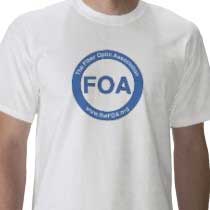
The FOA
has created a store on Zazzle.com offering lots of new logo
merchandise. It has lots of versions of shirts and other
merchandise with "FOA," "Fiber U," "Lennie Lightwave"
designs and more so you should find something just for you!
See FOA
on Zazzle.
-
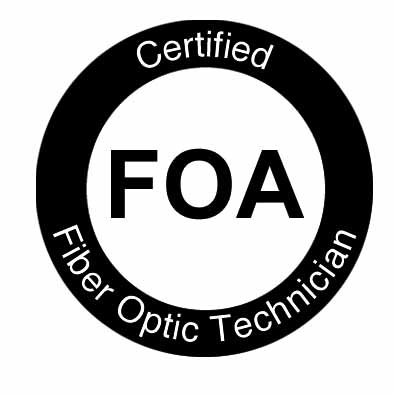
Your
Name, CFOT® - It pays to advertise!
The
FOA encourages CFOTs to use the logo on their business
cards, letterhead, truck or van, etc. and provides logo
files for that purpose. But we are also asked about how to
use the CFOT or CFOS certifications. Easy, you can refer
to yourself as "Your Name, CFOT" or "Your Name, CFOS/T"
for example.
Feel
free to use the logo and designations to promote your
achievements and professionalism!
Contact
FOA at info@thefoa.org to get logos in file format for your
use.
Privacy
Policy (for the EU
GDPR): The FOA does not use cookies or any other
web tricks to gather information on visitors to our
website, nor do we allow commercial advertising. Our
website hosts may gather traffic statistics for the
visitors to our website and our online testing service,
ClassMarker, maintains statistics of test results. We do
not release or misuse any information on any of our
members except we will confirm FOA certifications and
Fiber U certificates of completion when requested by
appropriate persons such as employers or personnel
services.
Read
the complete FOA Privacy Policy here.
|






























































 .
.





